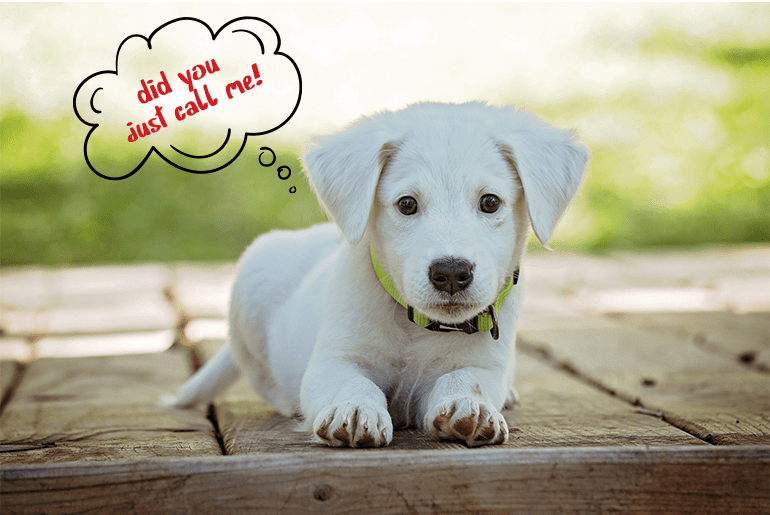Whether you’re with your dog at a park or inside your home, making your dog come to you when called is one of the most crucial things to be taught. This helps you to distance your dog from danger and keep him in good discipline. Although most dog owners are aware of the importance of the “come” command, most of them are confused about how to train their dog to come when called. Today, we are going to discuss how this can be achieved with optimal effort.
Below we’ll share our top tips to train your Dog to come when called
- Conduct brief training sessions
Dogs have a short attention span and are easily distracted. Avoid trying to train your dog in a setting where noise or odors will overwhelm it. It is highly recommended to conduct initial training in an indoor environment where you and your dog are comfortable and away from any kind of beguilement.
- Use your dog’s favourite treat or toy as an incentive
A fantastic stimulus can be something your dog enjoys, is portable , and easy to carry around. Use your dog’s favourite treats or a beloved toy when beginning training.
Say your dog’s name clearly and enthusiastically, followed by “come,” while holding out a toy or treat. Make any necessary motions, such as tapping your knees and taking a step backwards. When your dog approaches you, immediately give it a reward and generously praise it – but try not to over-excite it.
- Don’t accidentally punish your dog when they comply.
This might sound a little confusing because most of the new owners are not aware of this and keep on repeating the same mistake.
After the initial days of successful training, do not perform activities that your dog does not like right after your dog comes to once you say that “come” command. This creates a negative sentiment towards the command and might hinder the training progress.
A practical example can be taking your dog for a bath (which is something most dogs do not like at all) when it obeys and comes to you after you call him/her. Scolding, putting it on the leash, taking it away from the park, etc. can be some relevant examples of unintentional punishment.
- Practise whenever you can
Once your dog has a solid recall response, you may begin to practice it in casual settings like going for walks or just lounging about the house. Ask your dog to come wherever you are at random, and if they do, reward them with a treat.
This is when you reward them with three to five scrumptious bites, one at a time, while complimenting them on each accomplishment. As a result, your puppy will begin to associate the come command with affection and rewards, giving them the impression that they have just won the lottery.
- Repeat numerous times
Repeat the above steps randomly by implementing them on a daily course of action. Aim for 15 to 20 minute training sessions, and repeat them once or twice daily to help them internalize the information. Within one to two months of regular training sessions, you may anticipate your dog reliably coming when called. Some dogs could need more or less time to develop a consistent recall.
After your dog conveniently comes to you when called and you start to see some promising progress, you can use a long leash to start training it in parks and outdoors. Having a long leash will help to maintain safety and will allow you to practice long distance recall.
In an outdoor environment with numerous distractions, utilizing reinforcement is of high value. The secret to a good recall in situations with lots of distractions is to excite your dog more than whatever it is that he finds so fascinating “out there.”
One thing to always keep in mind is to never let your dog off-leash walk close to a road or other potentially hazardous situation, regardless of how good his recall is. The dog can be frightened by an unexpected event, such a car backfiring, which would put him in danger.
Once the recall is 100% reliable, remove the toys or treats gradually while continuing to reward your students with lots of praise. Your dog needs to learn to approach you without receiving treats or toys. In the real world, you might need it to show up but lack the means to do so other than praise.
The most crucial skill you can teach your dog is recall. The ability to train a dog to come requires a lot of dedication and positivity. It’s essential to only train your dog when you’re in a good mood, comfortable, and able to commit to a set amount of time.
Getting frustrated over slow progress and implementing negative corrective actions will only delay the training progress and demotivate your dog to comply with your call.
Therefore, it is very detrimental to conduct training for your dog to come when called in a peaceful environment with less distraction and with a positive attitude.






